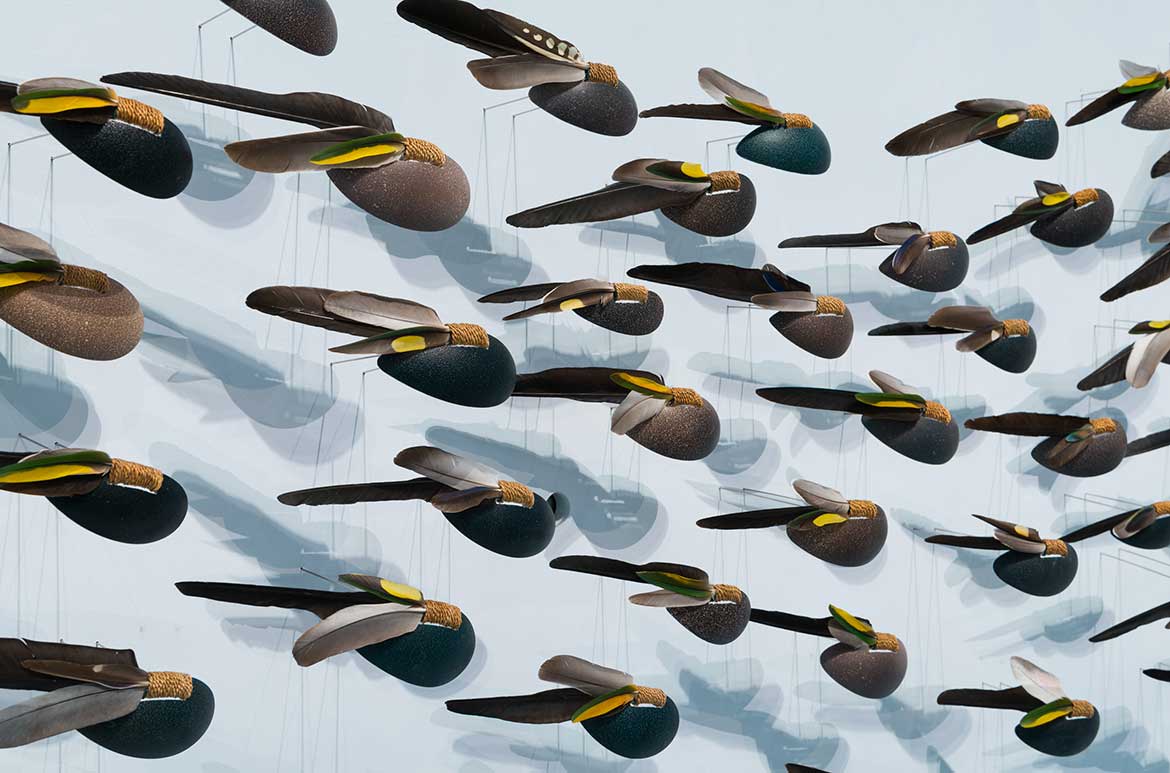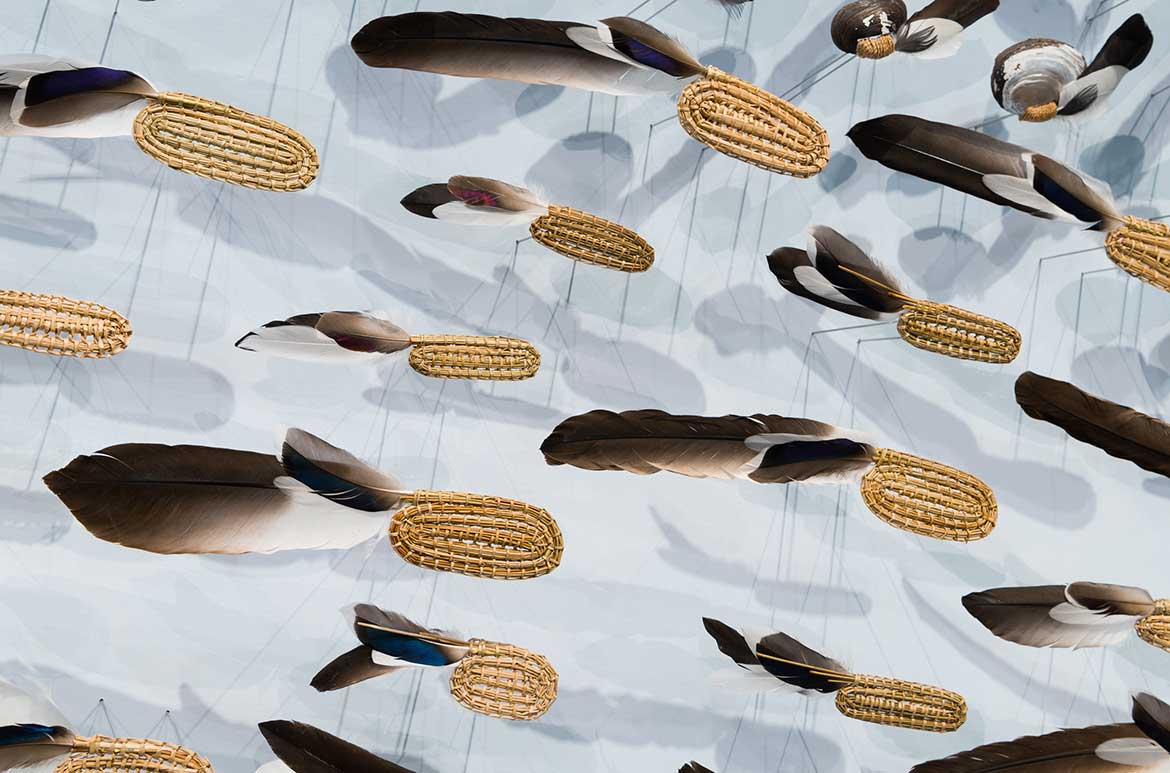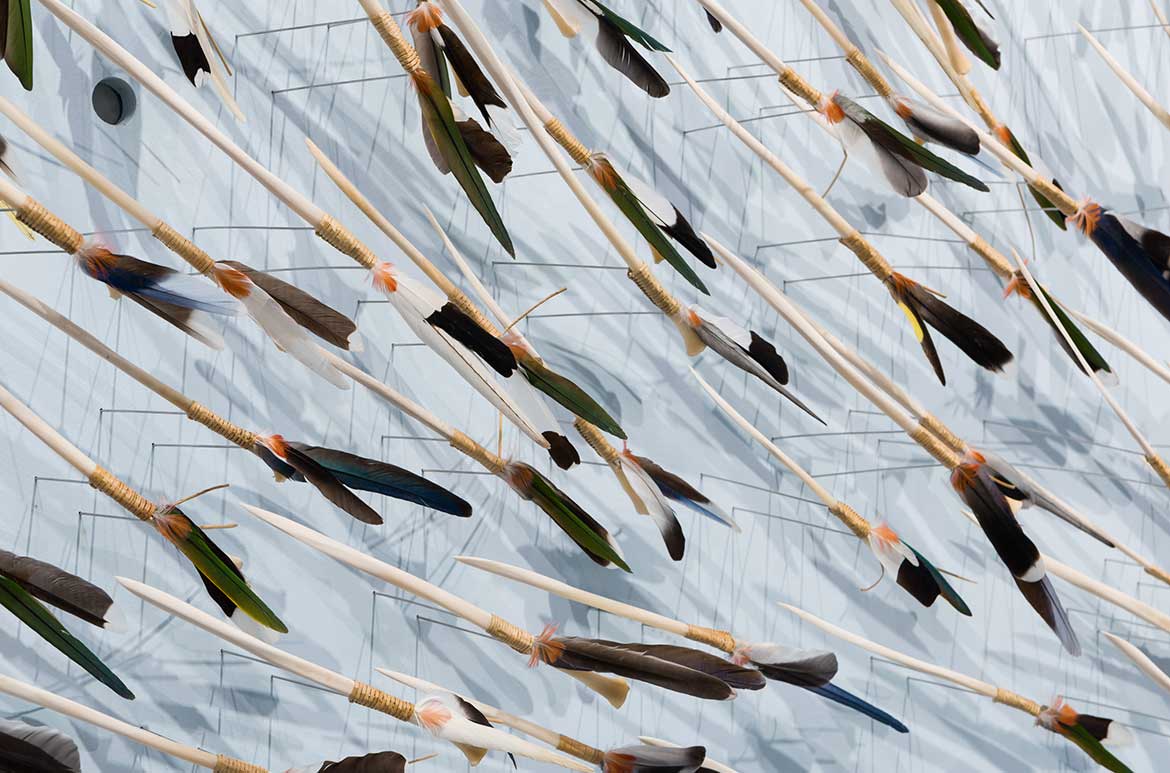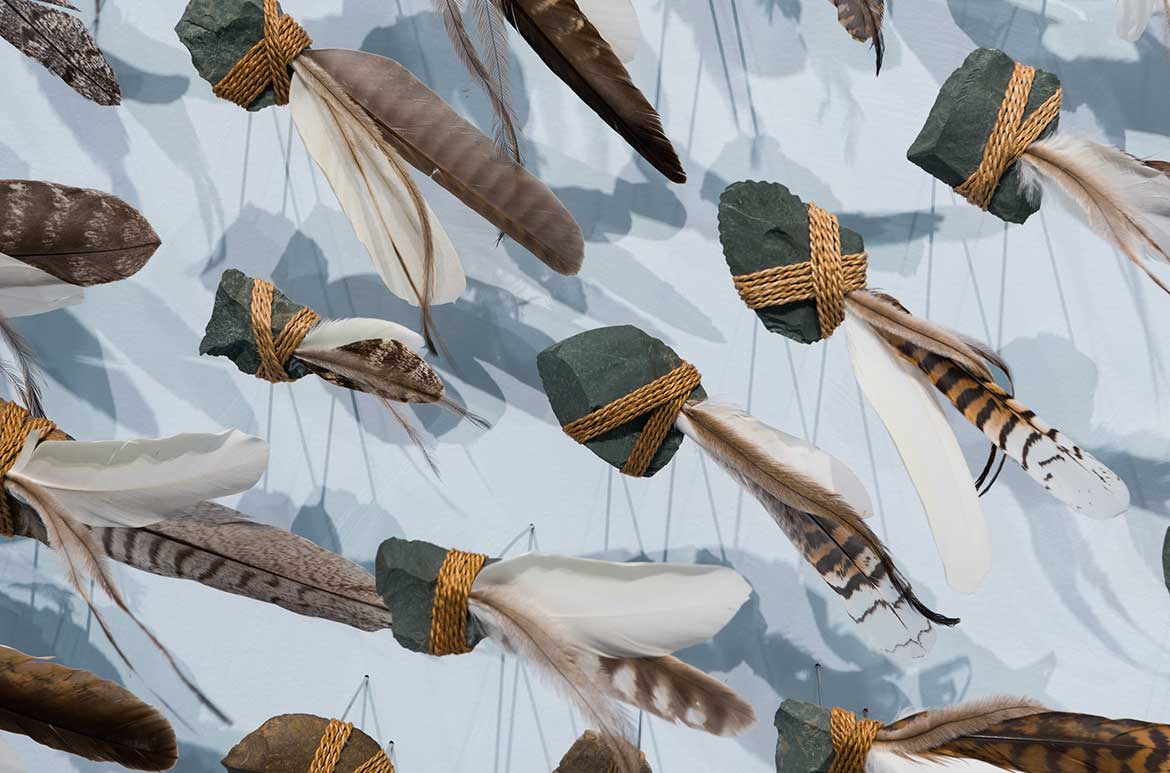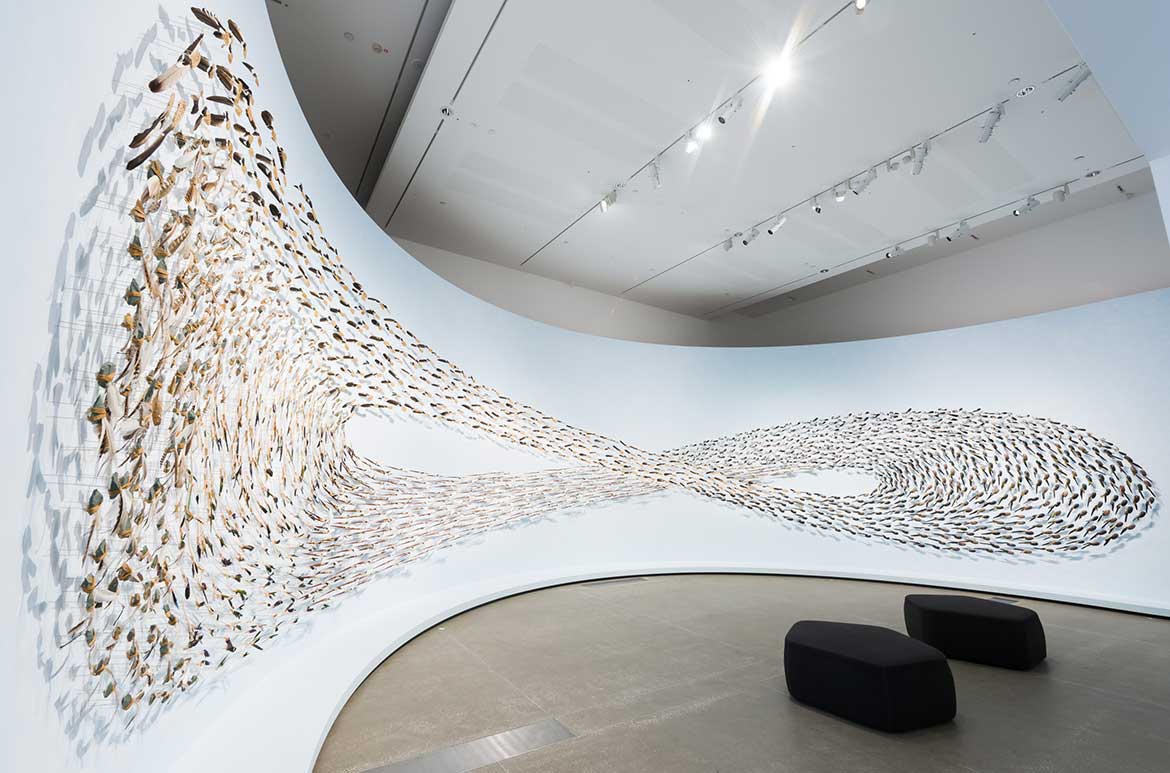‘Please traverse the space using only the rings’, William Forsythe requests as we encounter his installation of suspended gymnastic rings, The Fact of Matter 2009. To do so, we must lift ourselves into the air by stepping onto one ring, then another. Although the lower rings are hanging at a suitable height for our feet, to hold ourselves up, and move forward, we must rely heavily upon our arms and core strength. To pursue this alternative to walking, many of us will need to find new ways to move the weight of our bodies. Children might be able to do this easily; however, for adults it is a greater challenge. Forsythe says the work is ‘designed to give you an unadorned sense of three things: your weight, co-ordination and strength’.1
Subscribe to QAGOMA YouTube and step behind closed doors to experience the Gallery like never before
The Fact of Matter has two primary modes of engagement: to do, or imagine and plan how to approach the challenge. ‘You’re going to have to develop a strategy, it’s going to take a lot of concentration’, says Forsythe.2 ‘Choreography is a way to get things in motion, and artists are always trying to get people to move their minds in different directions.’3
This installation reminds us that once programmed into our bodies, our patterns of movement are very often taken for granted. The ‘matter’ of our body has evolved over millennia to navigate very particular conditions: moving from water to land; learning to breathe; and eventually to walk, run and dance — all the while taking advantage of new opportunities and managing risks encountered.
Forsythe is a choreographer, dancer and artist with a practice spanning more than 50 years, and he describes dance as ‘a conversation with gravity’.4 In addition to staging performances by highly trained dancers, Forsythe translates his enquires into how we move and relate to each other in new forms of dance and movement he refers to as ‘choreographic objects’. In such works, the audience might be ‘choreographed’ by an object or installation, or offered a challenge through which we become more aware of our own and others’ movements — discovering the choreographer within — and new ways to coordinate our energy and capacity. He invites us to play, to move with care and to find new ways to work with each other.
While The Fact of Matter was not made with an intended reference to climate change, it offers a vivid illustration of the effort that will be required to lift ourselves ‘up’ to avoid the rising waters, and the artist was open to this context. Sea-level rise has now accelerated to five millimetres a year.5 Rises of 40–80 centimetres are forecast by the year 2100, depending upon how we act, with a multi-metre rise predicted by 2300 if we continue on our current path.6 Our capacity for ‘transformational adaption’, our swiftness, dexterity and ingenuity in moving together, will be a key in determining the severity of the outcome.7 The Fact of Matter offers a way to think through these challenges that is physical, not abstract. Forsythe sets up a form of social choreography, speaking of movement and dance as ‘a way of thinking. The body is a thinking tool’.8
Geraldine Kirrihi Barlow is Curatorial Manager, International Art, QAGOMA
Endnotes
1 William Forsythe, interview with ICA Boston, ‘William Forsythe’s “The Fact of Matter”‘, ICA Boston, 15 November 2018, <www.icaboston.org/video/william-forsythes-fact-matter>,
viewed August 2019.
2 Forsythe interview with ICA Boston.
3 William Forsythe in dialogue with Louise Neri, ‘Unhoused and unsustainable: Choreography in and beyond dance’, in William Forsythe: Choreographic Objects [exhibition catalogue], Prestel, Munich, 2018, p.42.
4 Helen Luckett, ‘William Forsythe’, in Move: Choreographing You, ed. Stephanie Rosenthal, Hayward Publishing, London, 2010, p.104.
5 ‘Over the five-year period 2014–2019, the rate of global mean sea-level rise has amounted to 5 mm/year. This is substantially faster than the average rate since 1993 of 3.2 mm/year’ (The Global Climate in 2015–2019, World Meteorological Organization, 2019, p.6, <https://
library.wmo.int/doc_num.php? explnum_id=9936>, viewed
October 2019).
6 Intergovernmental Panel on Climate Change, IPCC Special Report on the Ocean and Cryosphere in a Changing Climate, forthcoming 2019, p.25. Refer to p.8 of this draft report for a graph on the primary drivers of expected sea-level rise under RCP2.6 (swift comprehensive action) and RCP 8.8 (business as usual) conditions, <https://report.ipcc.ch/srocc/pdf/SROCC_FinalDraft_FullReport.pdf>, viewed October 2019.
7 IPCC Special Report, p.71.
8 Eva Respini, ‘The body is a thinking tool’ in William Forsythe: Choreographic Objects, p.10.
Join us at GOMA until 26 April 2020
From major immersive experiences to smaller-scale treasures by Australian and international artists, the ‘Water‘ exhibition highlights this precious resource. Walk across a vast, rocky riverbed created by Olafur Eliasson; see animals from around the world gather together to drink from Cai Guo-Qiang’s brilliant blue waterhole; gaze at Peter Fischli and David Weiss’s snowman frozen in Brisbane’s summer heat; traverse a cloud of suspended gymnastic rings in a participatory artwork by William Forsythe, and reflect on the long history of our reliance on water through Megan Cope’s re-created midden. Tickets to ‘Water’ now on sale
Below the Tide Line
Kids and families can explore ocean conservation issues — particularly the impact that ghost nets have on the marine environment — via a spectacular artwork display, a drawing activity and an interactive screen-based animation. Find out more
The Noise of Waters
See films that explore our complex and contradictory relationship with water — the essence of life and an indefatigable, destructive force. Find out more
Buy the publication
An accompanying publication is available from the QAGOMA Store and online.
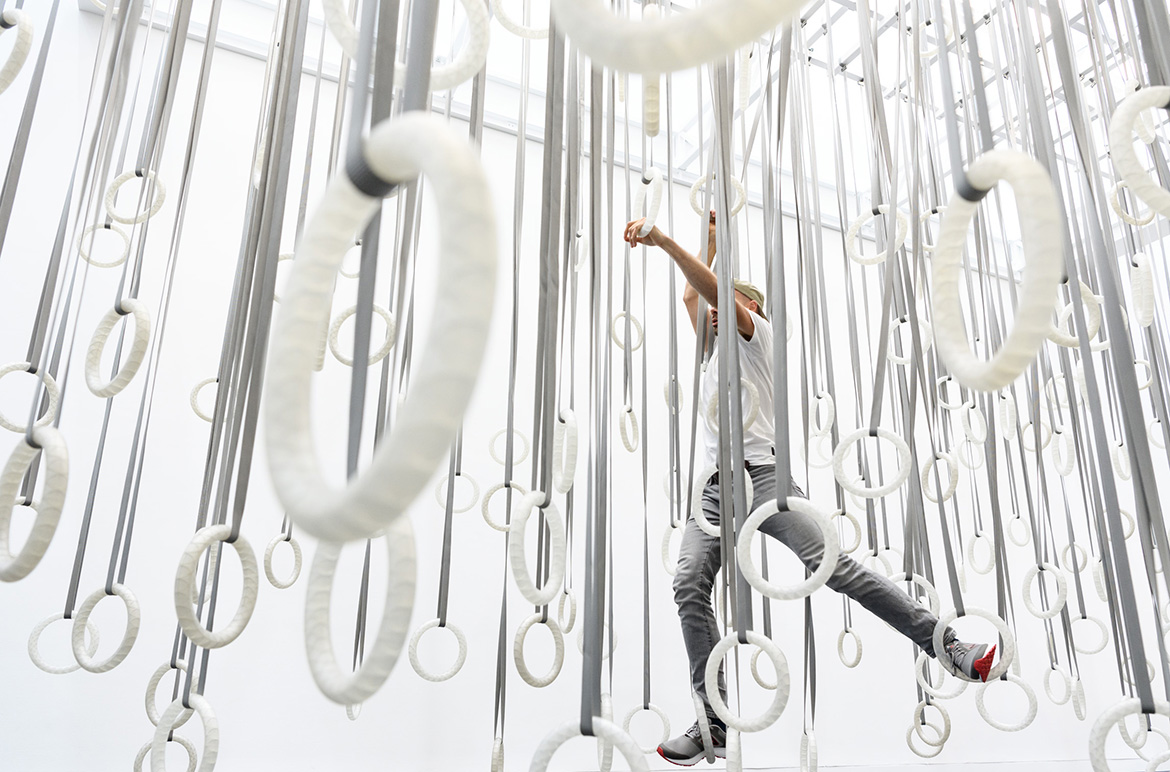
Subscribe to YouTube to go behind-the-scenes / Hear artists tell their stories / Read about your Collection
Feature image: William Forsythe The Fact of Matter 2009 installed at the Gallery of Modern Art, Brisbane 2019 during ‘Water’
#WaterGOMA #WilliamForsythe #QAGOMA
